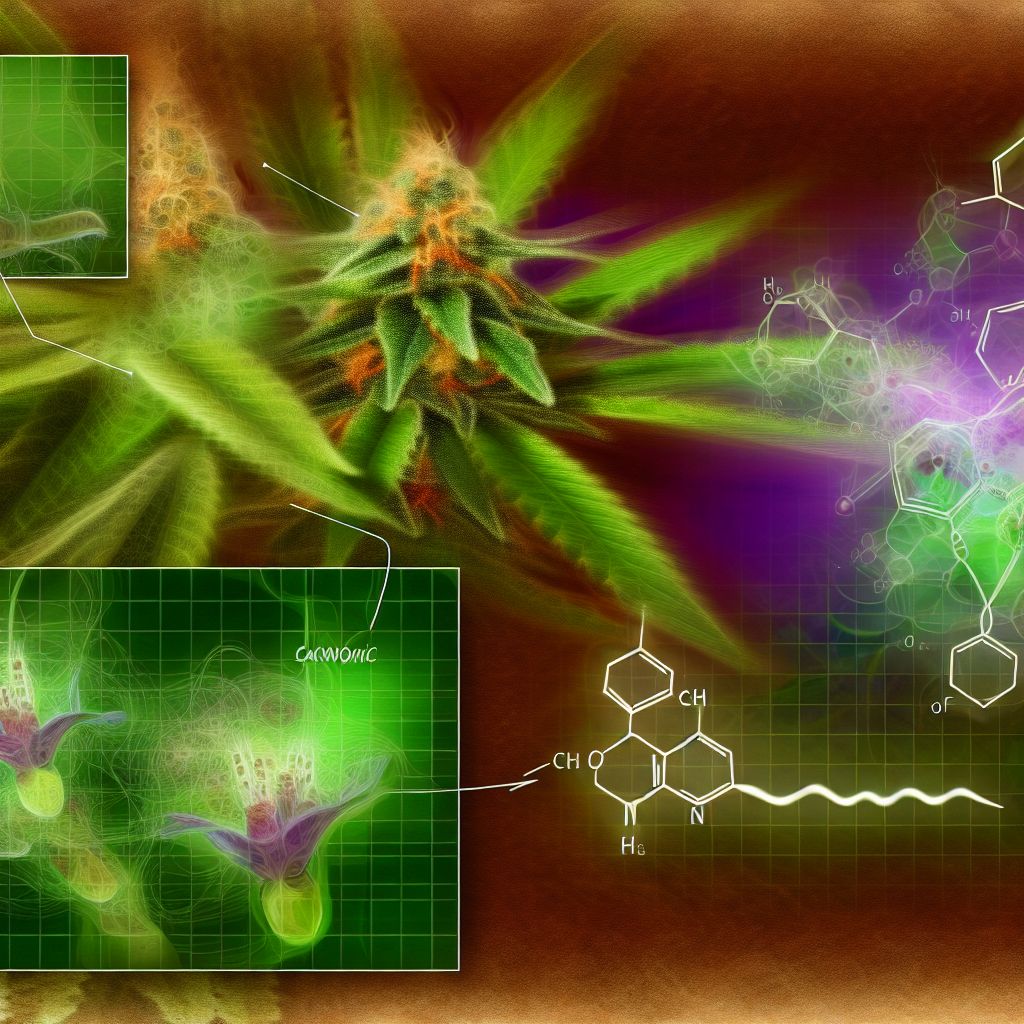The Role of Jasmonic Acid in Cannabis – Eliciting Terpene and Cannabinoid Production
Introduction
The growing interest in unlocking the full potential of the cannabis plant has led researchers and cultivators to explore natural biostimulants and hormones that help maximize the production of high-value secondary metabolites—particularly **cannabinoids** and **terpenes**. One such promising phytohormone is **jasmonic acid** (JA), which shows immense potential for naturally enhancing both the aromatic and therapeutic qualities of cannabis.
**Jasmonic acid** is a naturally occurring **plant hormone** found in terrestrial species like cannabis. It plays a crucial role in stress responses, pest resistance, and overall plant development. JA functions as a key signaling molecule, initiating defense mechanisms and encouraging the biosynthesis of vital secondary compounds. In cannabis, this often translates into amplified levels of **THC**, **CBD**, and terpenes such as **myrcene**, **limonene**, and **linalool**.
These chemical compounds primarily serve the plant’s defense systems rather than human consumption. However, **exogenous applications** of JA mimic stress conditions, prompting the plant to produce more of these defensive metabolites without the actual presence of pathogens or environmental stressors.
JA application offers an **organic and eco-friendly solution** for enhancing cannabis potency and aroma profiles. It opens possibilities for **medical cannabis** to become more therapeutically robust and for **recreational growers** to produce more appealing and commercially valuable strains.
Scientific Basis and Medical Research on Jasmonic Acid’s Impact
Jasmonic acid regulates multiple biological responses by activating a cascade of gene expressions related to **secondary metabolite biosynthesis**. In cannabis, this impacts the formation and accumulation of **cannabinoids** and **terpenes**, compounds directly linked to the plant’s medicinal and psychoactive effects.
A 2012 study from the University of Mississippi explored the effects of **methyl jasmonate**, a volatile derivative of JA, on Cannabis sativa. The study found a significant increase in THC levels when the hormone was applied during the flowering phase. Researchers linked this to heightened activity in **THC biosynthesis genes**, suggesting that JA directly influences cannabinoid output. [Elzinga et al., 2012](https://pubmed.ncbi.nlm.nih.gov/22554175)
Further evidence comes from a 2020 Iranian study, which investigated the impact of JA on **gene expression in cannabis cell cultures**. The research found increased transcription of key enzymes like **THCAS** and **CBDAS**, as well as enhanced **trichome development**. These resin glands are essential for storing the cannabinoids and terpenes that give cannabis its unique effects and scent. This suggests that JA not only pushes the plant to produce more compounds but also biologically equips it with better structures for cannabinoid and terpene storage. [Rahimi et al., 2020](https://www.sciencedirect.com/science/article/abs/pii/S0926669020304514)
JA has demonstrated similar effects in other **essential oil-producing plants**, such as lavender and lemongrass, where externally applied JA resulted in increased terpene production and oil yields. This reinforces the theory that JA functions not just as a defense signal but as a **catalytic regulator of plant chemistry**.
As interest grows in cannabinoid-enriched and terpene-rich cannabis products—especially “premium” strains—cultivators are seeking new but **sustainable methods** to bolster compound concentration. Because JA is naturally produced by plants and has a low toxicity profile, it fits well into **organic farming models** and might replace synthetic boosters.
While standard dosages and timings are still being researched, many growers are now experimenting with **foliar applications** of JA during early and mid-flowering stages, gradually adjusting concentrations to balance plant health and biochemical output.
Conclusion
Jasmonic acid is positioned as a powerful resource in the modern cannabis grower’s toolkit. Its integral role in activating defense pathways and secondary metabolism makes it a potent natural enhancer. By **stimulating trichome development**, **upregulating cannabinoid and terpene biosynthesis**, and remaining in harmony with organic cultivation principles, JA offers both **medical and recreational cultivators** a valuable asset in creating high-quality cannabis.
As interest continues to rise around organic enhancements and plant biology, **jasmonic acid** is likely to play a central role in the genetic and commercial evolution of the cannabis industry.
References
1. [Elzinga, S., Fischedick, J., Podkolinski, R., & Raber, J. C. (2012). “Cannabinoids and terpenes as chemotaxonomic markers in cannabis.” Journal of Natural Products](https://pubmed.ncbi.nlm.nih.gov/22554175/)
2. [Rahimi, A., Koohsari, P., & Mohseni, M. (2020). “Effect of methyl jasmonate on gene expression and cannabinoid production in Cannabis sativa cell culture.” Industrial Crops and Products](https://www.sciencedirect.com/science/article/abs/pii/S0926669020304514)
3. [Wasternack, C., & Song, S. (2017). “Jasmonates: biosynthesis, metabolism, and signal transduction.” Journal of Experimental Botany](https://academic.oup.com/jxb/article/68/6/1303/2907305)
4. [Yan, T., et al. (2016). “Experimental evidence showing the effect of exogenous methyl jasmonate on secondary metabolism in medicinal plants.” Frontiers in Plant Science](https://www.frontiersin.org/articles/10.3389/fpls.2016.00064/full)
Concise Summary
Jasmonic acid is a naturally occurring plant hormone with demonstrated benefits in enhancing **cannabinoid** and **terpene** production in cannabis. Through mimicking stress responses, JA boosts gene activity tied to **THC**, **CBD**, and **trichome development**, improving potency and aroma naturally. Supported by studies on both cannabis and other medicinal plants, JA offers a safe, organic method to elevate phytochemical profiles without genetic modification or synthetic additives, making it a promising tool for both medical and commercial cannabis cultivation.




